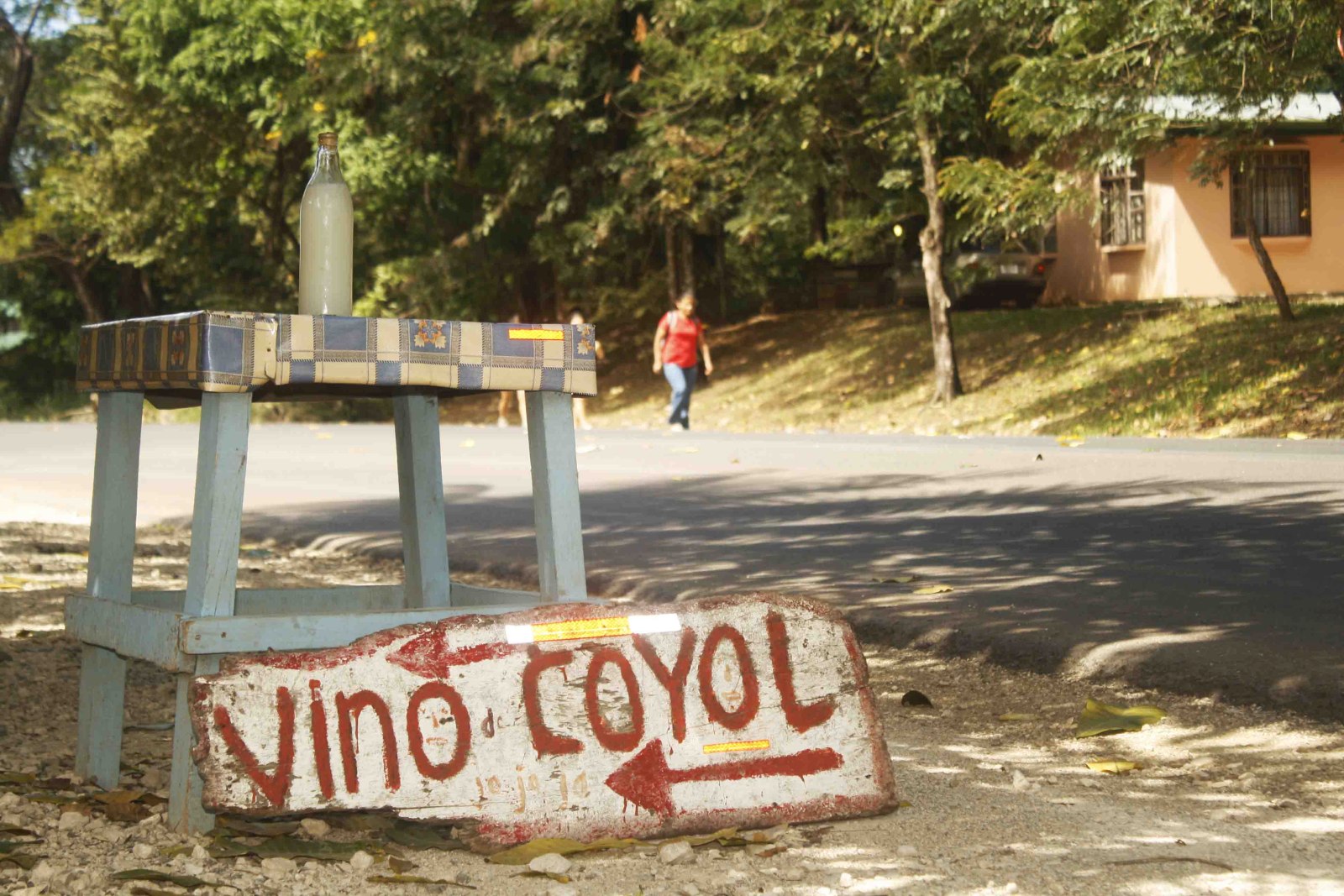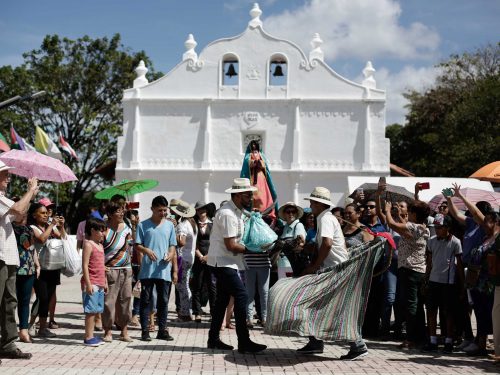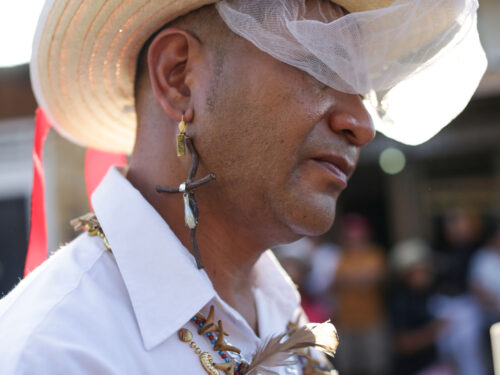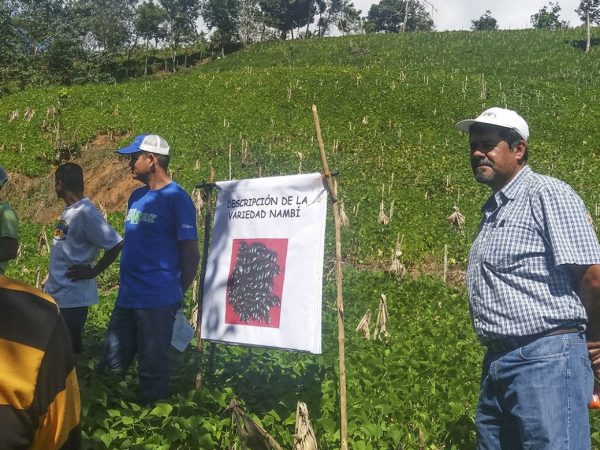
With the arrival of the midday sun, the bottle of coyol wine (made from the sap of coyol palms) sits on a light blue wooden table that is covered with a checkered tablecloth and protected by a plastic cover with pieces of reflective tape on the sides, to immediately catch the attention of drivers passing by. The bottled sap looks clean and foamy, enticing one to have a taste.
Nambi of Nicoya is synonymous with coyol. For that reason, people who travel via route 21 know that when they’re between Santa Cruz and Nicoya, they can’t avoid thinking about the famous white drink. However, this year Nambi’s coyol producers have had to struggle to maintain the tradition and their businesses. On March 11, 2013, the office of the Ministry of Health in Nicoya ordered them to add bathrooms and ramps for the handicapped to their businesses, lay cement floors, improve ceilings, obtain fire extinguishers and even install emergency lamps.
Broken Coyol, Eaten Coyol
The majority of coyol producers in Nambi found themselves in a predicament to be able to fulfill the requirements established by the health department, as they lacked the funds necessary to make the changes and improvements in their shops. As the saying goes, “broken coyol, eaten coyol,” meaning that anything earned this way had to be spent quickly.
One coyol producer is Julio Antonio “Tony” Muñoz Gonzalez who, along with his wife Yinete “Yini” Alvarez Aguilar, are well-known for selling the most coyol in Nambi. Regardless, due to the authorities’ demands, Muñoz had to close his shop in March of 2013, after more than 20 years.
“If I would have had money when the health department came, I would have made the changes before and in October I would have already been working. I had to race to get loans. We’ve spent at least six million colones ($12,000). We’re struggling; I’m only left with debt and am trying to get out of it little by little,” he said.
Even though he was unable to open his coyol bar until January, Muñoz was optimistic about the changes that he is making at his business, which now has a kitchen, eating area and new bathrooms. In addition, he will be adding a parking lot in his home’s yard so that his clients can park their cars.
“I was thinking of doing something small, but it’s better to do something big and beautiful that will be around for a long time. On one hand it is better to comply with the law but it’s not as rustic as before,” he affirmed.
Gabriel Sotelo, an official of the Ministry of Health in Nicoya, explained that, “The changes asked for [from the coyol producers] are improvements that have to do with physical and sanitary conditions, such as infrastructure, equipment, security measures, cleaning and disinfection, bathrooms and others, which is all backed up by the established Public Food Service Regulations.”
Another coyol producer who had to “race” is Jamis “Macho” Rodriguez Campos, who has sold coyol for seven years. In past times, he had his rancho along the side of the highway and worked with Muñoz. He says that that’s how he learned the trade. “With time I decided to set up my own business and started to buy trees, and that’s how I got started,” he said.
However, Rodriguez is still bothered by the way the health officials closed their businesses. “It was Easter Week and they came with two police officers, like we had robbed or done something serious, and they closed the coyol bars,” he recalled.
For that reason, he now rents the Pata de Piche bar, in the center of Nambi, a place that complies with all of the law’s regulations, and moreover, he can sell coyol and cook his famous achiote chicken (gallina achiotada). “Coyol sales have gone down. People liked to sit and drink coyol in a palm-thatched rancho with a dirt floor, not in luxurious places,” Rodriguez said.
For his part, Sotelo affirmed that currently the orders that were given are in a pending status, due to the fact that they need administrative follow-up.
From the Palm to the Glass
The coyol tradition is more than a hundred years old in Guanacaste. It is most consumed during the dry season from December to March. Even though there is no certain answer as to when people began to drink coyol, it is understood that even the native Chorotega people drank it as a celebratory drink that gave them strength and vitality.
Once the coyol wine is extracted from the palm, fermentation begins. To slow down that process, the liquid is strained, bottled and refrigerated to keep it very cool and sweet. However, as soon as the wine is out of the refrigerator and exposed to the sun, it becomes foamy and the flavor becomes stronger and more bitter, “going to your head” if you aren’t careful.
Aracely “Ana” Rodriguez Rodriguez, of the Coyolera Chepelito in Nambi, took us to her home’s yard, where ten coyol palms were on the ground. Each was covered on its top by a wood lid made by her husband, Jose Eduardo “Chepelito” Villafuerte. On the other end, there was a sheet of tin, “just in case it rains,” she told us.
Then, she brought a glass and plastic pitcher, opening the spout to show us what was inside. It was white and foamy, filled with sweet wine. “When you cut the tree, you make the spout with a machete, you take out the wine three times per day, you strain it and then bottle it,” she explained, adding, “at 1 p.m. the coyol is always sweet. If you leave it out of the freezer it starts to ferment. Here we always have both kinds: sweet and fermented.”
A coyol palm can yield between 60 and 70 liters. The price of a liter of coyol is around 2,000 colones ($4).
Ana Rodriguez was born in Puntarenas but has lived in Nambi for 43 years, selling coyol for more than 30 years. She says that coyol is part of her life and that thanks to coyol has she been able to raise three children and four grandchildren.
“I like the sweet wine. I take it as medicine. Here in the house we all drink coyol. It is very good for anemia. It has a lot of iron and is even good for colds because I have a lot of grandchildren here, who don’t get sick,” she asserted.
The Future is Planting
Although for now the coyol producers buy their trees for between 20,000 and 30,000 colones ($40-60) each, they agree that the future of the activity depends on planting more coyol trees to continue the tradition.
For that reason, Aracely Rodriguez and her husband planted several trees ten years ago in their farm in Santa Cruz so they won’t have to keep buying more. “When we started to sell coyol here [in Nambi], you could find them on every farm, and now there aren’t any. It takes ten years for a tree to yield coyol,” she explains. “We have to plant coyol because if we only cut and we don’t plant, the tradition will end.”
For his part, Jose “Chepelito” Villafuerte affirmed that the coyol tree is endangered, and agrees that it is essential to plant more. “We have 3,500 coyol trees planted at the farm. This year we planted 150 trees so there will be enough,” he said.
With the changes and regulations ordered by the Ministry of Health, all of Nambi’s coyoleros agree that trying to “modernize” has been detrimental to the tradition. However, they are sure that Nambi will continue to be known as the coyol wine capital and that they will continue to fight to preserve the legendary Chorotega drink.







Comments